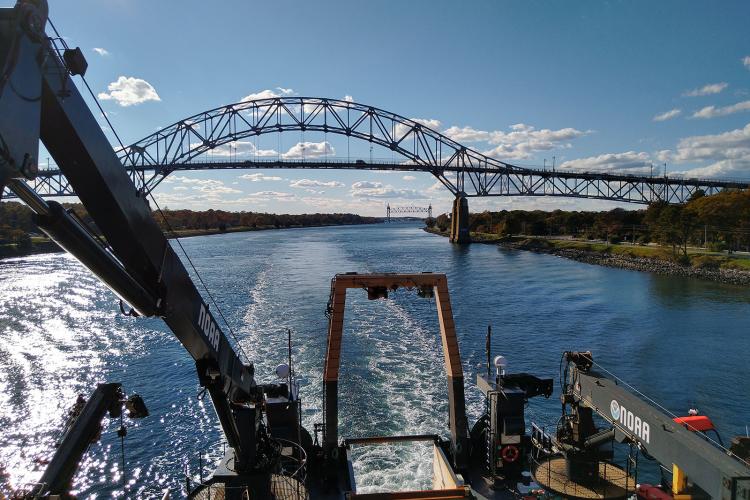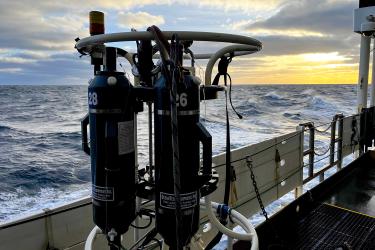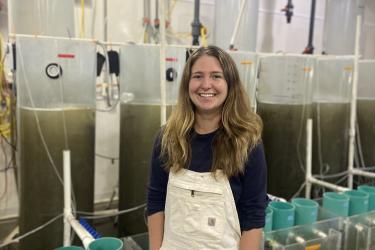I’m back on the NOAA Ship Henry B. Bigelow for Leg 3 of the fall bottom trawl survey. It was a delight to walk into the dry lab and see the beautiful artwork created by the scientists who sailed on the previous two legs. There was a fish print, free-hand drawings of a butterfly, a portrait, several designs from a coloring book, and a piece of abstract art. It’s common for science and art to overlap, and that’s clearly evident from this small gallery.
Our first station was somewhere between Provincetown on Cape Cod, Massachusetts and Georges Bank. The fastest way to get there was to pass through the Cape Cod Canal. It was a beautiful day to sail with a shining sun and large, white clouds. Several of the scientists stood on the flying bridge enjoying the journey. A piece of advice we were given was “No matter how many times you go through the canal, always go outside and watch it because someday you won’t be sailing, and you’ll miss it.”
Just after the sun set that evening, the remaining rays cast beautiful pastel pinks and blues across the sky. It was very calming and peaceful. Just another beautiful evening outside on the flying bridge!
In one of the early tows, we were surprised to find a paper nautilus, Argonauta argo. Despite having “nautilus” in its name, it’s not a nautilus at all but rather a pelagic octopus. Secretions from glands on the female paper nautilus’ arms create a shell. This very thin shell protects the octopus itself and its eggs. Males are much smaller than the females, only reaching a couple centimeters long, and do not secrete a shell. On the other hand, females can grow up to 2 meters long. If you comb the beach, you may be lucky enough to find one of these beautiful shells.
Most importantly, we’re back into the routine of sampling and processing fish, and with that, we’re perfectly happy. Here are some more images we took to remember this day.
2021Northeast Fisheries Science Center Fall Bottom Trawl Survey
Aboard the NOAA Ship Henry Bigelow






